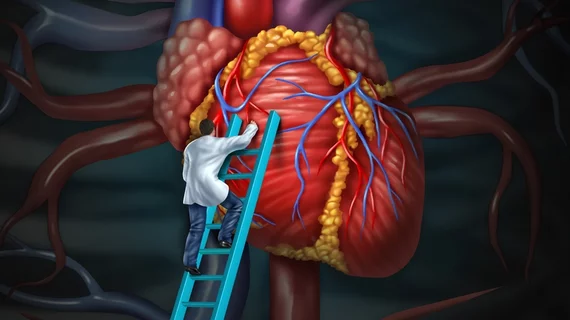Researchers have identified a new technique that could potentially improve myocardial recovery among patients with chronic heart failure, publishing their findings in Circulation.
The team’s approach combines “aggressive pharmacologic therapy” with the temporary use of a left ventricular assist device (LVAD)—and it’s a fresh look at a basic concept that has been in practice for many years.
“For decades, heart transplantation and LVADs have been the therapeutic cornerstones of advanced heart failure,” co-corresponding author Stavros Drakos, MD, PhD, a cardiologist at the University of Utah in Salt Lake City, said in a prepared statement. “But this alternative approach is different. It appears to be a bridge to heart recovery without requiring transplantation or long-term use of an artificial heart pump.”
The RESTAGE-HF study included 36 patients with chronic advanced heart failure from non-ischemic cardiomyopathy. All patients had experienced heart failure symptoms for five years or less. They received the same LVAD at one of six facilities “with demonstrated previous experience in recovering and explanting LVAD services.” The mean patient age was 35.1 years old.
After the LVAD was implanted, the pump speed would be optimized using echocardiography. The speed was then increased at subsequent visits until the left ventricular end diastolic diameter was less than 6 cm and mitral regurgitation was less than 2+. The medication given to each patient included lisinopril, carvedilol, spironolactone, digoxin and losartan.
Overall, significant improvements were observed in 52.3% of patients. The LVAD was removed for each of those patients. Also, 90% of patients who had the LVAD removed were still alive one year after removal, and 77% were doing well after two and three years after removal.
According to the authors, these findings suggest that temporary LVAD use, standardized pharmacologic therapy and consistent checkups can help heart failure patients recover without either a heart transplant or the lifetime use of a LVAD. Based on this success, the team has already made plans to conduct additional research on this new treatment option.
“This multi-center study builds on and validates more than a decade of research conducted by Utah physician-scientists in this exciting field of heart recovery,” Drakos said. “We are invested in figuring how to help a failing heart recover its function with just a little help from us.”
The full analysis is available here.

